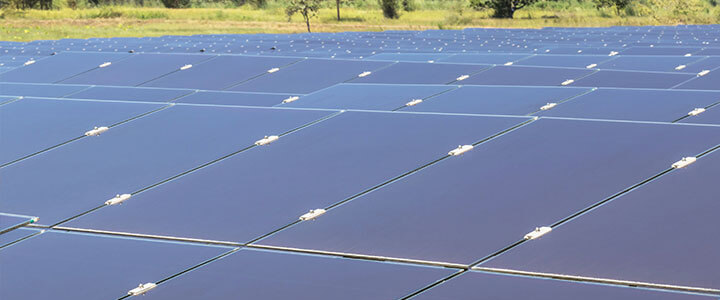
In the past few decades, the rapid rise in worldwide electricity consumption as well as the gradual rise in global oil prices, combined with rising pollutant emissions, have highlighted the critical issues for sustainable as well as affordable fresh power production.
So, why do we need thin-film solar? What is it used for?
A thin-film solar panel is a modern variation on the basic solar panel. Traditionally, solar cells were made from crystalline silicon.
Uses of A Thin-Film Solar
A thin-film photovoltaic cell is a sort of gadget that converts sunlight into electrical electricity generation (via the PV effect) and therefore is made up of micron-thick photon-absorbing layers of materials accumulated over a substrate material.
These solar cells were then packaged into modules and wired together to create a solar panel.
As time went by, however, solar cells became thinner and tinier. They became even less efficient and electrical conductors, and they were also more prone to damage.
How Is Thin-Film Solar PV Made?
The thin-film solar PV is made by depositing just one or several thin layers of photovoltaic material onto a clear, smooth, semi-transparent substrate, like plastic, glass, or metal. This substrate is then etched and bent into shapes.
The desired shape is then etched into the cell. This process leaves the cell-free to absorb energy, with each cell receiving a charge for as long as its wire is exposed to sunlight. In effect, this charge accumulates over the entire length of the wire.
Each thin-film module can be purchased at prices that are well below the bulk pricing of the crystalline silicon solar cells.
The reason for this is simple: When crystalline silicon modules are sold in large lots, they sell for prices that include markup for their mass production. When these modules are thin-made, no such markup takes place, so the modules command better wholesale pricing.
Some manufacturers have developed special technology to ensure that there are no bumps, creases, or bubbles in the finished product. This means that the overall efficiency of the cell improves, as well.
The 2 Types of Thin-Film Technologies
The two thin-film technologies that make up the thin-film PV panel technology are called active and passive.
An active material, like silicon solar panels, is one that has particular advantages which allow it to capture more energy from the sun than an inactive material, like cadmium. The most common active material is crystalline silica. Other materials with similar properties can be used as well.
Thin-film modules work well for both residential and commercial applications. They combine the benefits of efficient production with higher efficiency manufacturing. The utility-scale modules that are made for home use include single-crystalline cells.
Many utility-scale modules today use active materials in addition to crystalline cells. Some residential thin films even incorporate both active and passive materials.
Some commercial applications, however, require crystalline modules. These modules are manufactured using amorphous silicon, which combines elements from both crystalline and amorphous silicon types.
Amorphous silicon solar cells have the benefit of being capable of storing more electricity than crystalline cells. The cost of manufacturing thin-film cells using amorphous technology is therefore somewhat higher. This, however, is offset by the fact that amorphous silicon solar cells have a longer lifetime.
Thin-Film Solar Cells
There are two types of thin-film solar cells: active and passive. An active thin-film solar cell incorporates both active and passive components. A passive thin-film solar cell only incorporates passive components. A thin-film solar panel incorporates both types of technology to increase the efficiency of its electricity generation.
- Thin-film technology is rapidly evolving into thin-silicon technologies. Recent studies indicate that the efficiency of crystalline silicon solar panel modules has reached the limit for which it can be used. Researchers anticipate developing thicker silicon solar panels capable of handling more solar energy, thereby reducing the cost of electricity generation.
- The widespread use of utility-scale crystalline silicon solar panels in Australia and the rest of the world has contributed to a significant drop in the cost of solar energy. However, the widespread use of thin-silicon technologies by governments and utility-scale industrial companies has significantly increased the cost of solar energy.
Some of the best applications of thin-silicon technology are found in the photovoltaic industry.
Researchers have developed several new methods for increasing the efficiency of crystalline silicon PV cells.
With advancements in polycrystalline silicon and other advanced technologies, researchers expect to achieve efficiencies as high as 20% per electrode for a utility-scale module.
Researchers have also been successful in achieving efficiencies as high as 40% per electrode for small photovoltaic modules.
Advantages in The PV Industry
Thin-film technology has also discovered certain advantages in its use in the photovoltaic industry.
A major advantage of thin-film technology is the fact that thin-silicon materials are well suited to use in applications where the surface texture has an impact on the performance of the device.
For instance, a thin-film photovoltaic module constructed from cadmium telluride with a polished aluminum frame is highly effective at generating electricity from the sun’s light.
The thickness of the cadmium telluride thin film was found to affect the way the electrons moved when the cells were active. The thicker the material, the less likely it would be for the electrons to travel the way they needed to for the maximum conversion of solar energy into electricity.
Conclusion
In order to make full use of the strengths of thin-silicon materials without decreasing their electrical conductivity, scientists have developed a new type of thin-film panel using a combination of polycrystalline silicon and a boron carbide bandgap. The two kinds of silicon found in tandem-cell designs have the ability to stabilize and confine solar electromagnetic energy, while still allowing a large surface area of exposed silicon for electrical generation. As this type of tandem-cell structure becomes more popular and becomes a standard design in the industry, researchers predict that many more solar applications will be developed which will open up entirely new arenas in solar power.
